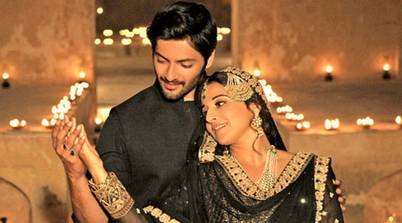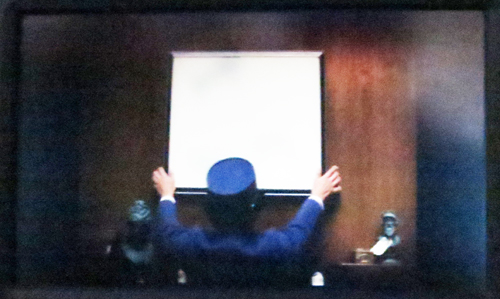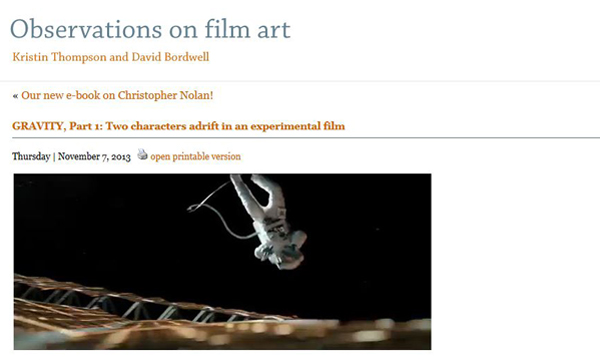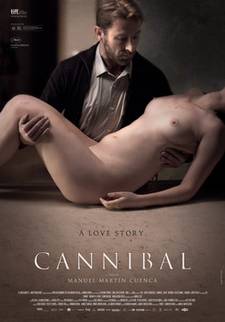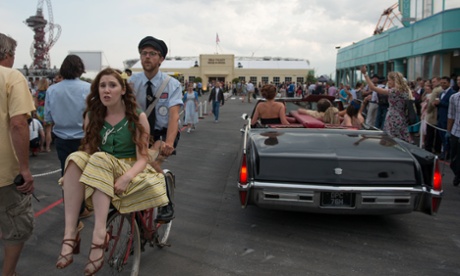Category: cinema
Proof! and a minor mystery
DB here, sort of:
Even doggedly determined readers of this blog may not have seen the codicil to my infuriatingly long entry on The Grand Budapest Hotel. I revisit those remarks now, only because coming back from my trip to Yurrrp, I have evidence of a version that many cinephiles may not see. Here’s what I appended to the old post:
Flying here the other evening, I watched The Grand Budapest Hotel on the plane, just to see what adjustments might have been made. (“This film has been modified to fit this screen and edited for content.”) Surprisingly, the aspect ratios were all preserved. The cuss words were cut out, as was the fellatio shot (but not the guillotined fingers). The most startling change was that the painting of female sexual congress had become a big, blank white one in the Rauschenberg mold. Was it an alternative shot for the airline version, or was the naughty one digitally whitewashed?
Flying back, diligent film researcher that I am, I took a shot of the bowdlerized image. My questions remain. I could imagine it as an Anderson joke, but also as a default for a censorious post-production.
SOURCE: Observations on film art - Read entire story here.
Read MoreIs there a blog in this class? 2014
Kristin here:
Once again the fall semester approaches, and educators are pondering their film-class syllabi. As always, we have prepared a guide to our blog entries from the past year, with suggestions about how some of them might usefully be assigned alongside chapters of Film Art: An Introduction. Readers who aren’t teaching could use this guide to alert them to entries they may have missed.
For the entries from past years, see 2007, 2008, 2009, 2010, 2011, 2012, and 2013.
David is at work on a book on 1940s Hollywood cinema, which he finds a strange and innovative era. Several of his entries for this past year reflect that focus.
Chapter by chapter
Chapter 1: Film as Art: Creativity, Technology, and Business

Last year several of our entries dealt with the conversion of exhibition from film to digital copies. That conversion has progressed until 35mm houses are now relatively rare. We take a look at a theater still showing movies on film in “Dispatch from another 35mm outpost. With cats.”
Chapter 3: Narrative Form
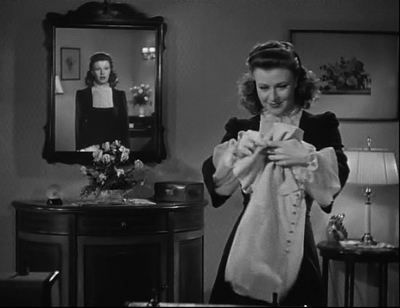
Sometimes producers force scriptwriters to change their scripts. These changes aren’t always bad. They can lead filmmakers to find ingenious solutions that actually enhance the result. We look at some examples from the 1940s in “Innovation by accident.” (As in Kitty Foyle, above.)
Two professors have already told me they were going to teach Gravity this coming semester, assigning our two entries on the film. These could be used for a variety of chapters: the first one, “GRAVITY, Part 1: Two characters adrift in an experimental film” is on the narrative of the film and could most obviously assist in teaching Chapter 3. It might also be a helpful reference, however, for Chapter 10, in discussing the boundaries between experimental and mainstream cinema.
The differences between suspense and surprise is a common topic in discussing narratives. We look at Hitchcock’s famous distinction between them and where he got it in “Hitchcock, Lessing, and the bomb under the table” and “Hitchcock Again: 3.9 Steps to Suspense.”
For advanced students, you might consider assigning an essay David has posted on his website proper, “Three Dimensions of Film Narrative.” He elaborates on this essay with examples from Scorsese’s The Wolf of Wall Street in “Understanding film narrative: The trailer.”
Modernism involves playing with plots, sometimes in challenging ways. In another entry for advanced students, we examine such playfulness: “Pulverizing plots: Into the woods with Sondheim, Shklovsky, and David O. Russell.”
During the 1940s, filmmakers sometimes explicitly broke their films down into chapters. That tradition has not disappeared–especially in the films of Quentin Tarantino. We explore some connections in “The 1940s are over, and Tarantino’s still playing with blocks.”
Chapter 4: The Shot: Mise-en-scene
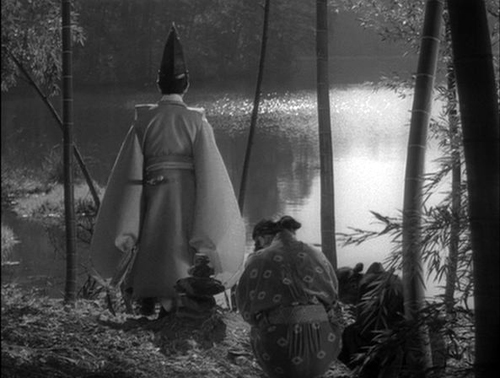
Staging is an important aspect of acting. We give some historical notes about how characters have been set up to face each other in a two-shot composition in “Where did the two-shot go? Here.”
Few directors combine staging, setting, composition and actings as brilliantly as Kenji Mizoguchi. We explore his extraordinary mise-en-scene in “Mizoguchi: Secrets of the exquisite image.” (Above)
Chapter 5 The Shot: Cinematography
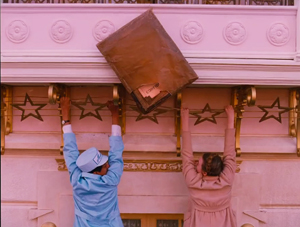
In anticipation of Gravity‘s release, we wrote about long takes in Alfonso Cuarón’s earlier films and in particular Harry Potter and the Prisoner of Azkaban in “Harry Potter treated with gravity.”
Our second entry on Gravity, “GRAVITY, Part 2: Thinking inside the Box,” could be taught in connection with the entry on Harry Potter and the Prisoner of Azkaban in discussing long takes. It also, however, exemplifies cutting-edge techniques in digital cinematography, special effects, and 3D.
Wes Anderson’s The Grand Budapest Hotel wonderfully exemplifies variations on aspect ratios. Its style is also based on framing perpendicularly to the backs of sets (earlier explored in “Shot-consciousness”). See “THE GRAND BUDAPEST HOTEL: West Anderson takes the 4:3 challenge.” (Above)
Chapter 6: The Relation of Shot to Shot: “Editing”
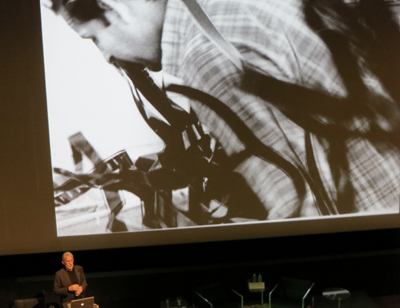
At the Vancouver International Film Festival, we caught Walter Murch’s lecture on the industry’s transition to digital editing. Here’s our write-up: “Film-industry pros share secrets in Vancouver.”
Our two Wes Anderson blogs (here and here) discuss his customized variant of classical continuity editing.
Chapter 8: Summary: Style as a Formal System
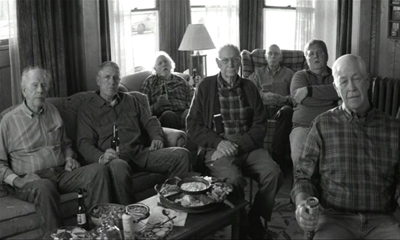
Nebraska
Teaching about auteurism and style? Kristin met Alexander Payne last year at Il Cinema Ritrovato. Then he came and visited Madison this past spring. We blogged about that visit and his films in “Alexander Payne’s vividly shot reality.” He was still talking to us at Il Cinema Ritrovato this year, so he must have liked the entry!
Chapter 10: Documentary, Experimental, and Animated Films
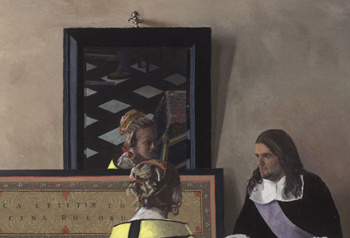
We wrote an entry on a major recent documentary film, “I am a camera, sometimes: Tim’s Vermeer.” Also quite teachable.
Chapter 11: Film Criticism: Sample Analyses

If you show Tokyo Story, or any other Ozu film, your students might be interested in Ozu’s influence up to the present day. Our entry “Look well! Look again! Look! (For Ozu)” explores this subject.
Apart from the entry on The Grand Budapest Hotel linked above, we’ve written an analysis of his previous film in “Moonrise Kingdom: Wes in Wonderland.” His recent films, starting with Fantastic Mr. Fox, strike us as very teachable.
David has written several entries on some major American critics of the 1930s and 1940s–Otis Ferguson, James Agee, Parker Tyler, and Manny Farber–and their approaches to analysis and evaluation. These would be suitable for students interested in writing film criticism themselves.
“Otis Ferguson and the Way of the Camera”
“The Rhapsodes: Agee, Farber, Tyler, and Us”
“Agee & Co.: A Newer Criticism”
“James Agee: All there and primed to go off”
“Manner Farber 1: Color commentary”
“Parker Tyler: A suave and wary guest”
and finally “The Rhapsodes: Afterlives”
Chapter 12 Historical Changes in Film Art: Conventions and Choices, Traditions and Trends
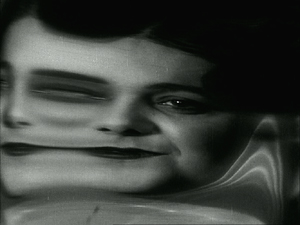
If you are looking for silent films to show as illustrations of German Expressionism, French Impressionism, silent classical Hollywood, or very early experimental cinema, try the latest entry in our surprisingly popular annual summary, “The ten best films of …1923.” Not all the films are available on DVD at this point, but the ones that are are well worth seeking out.
Examples of early film and the transition to more classical storytelling can be found in our summer entry, “What’s Left to Discover Today? Plenty.”
An update to the Hong Kong section of the chapter can be found in our entry on Wong Kar-wai’s latest film: “THE GRANDMASTER: Moving forward, turning back.”
Further resources
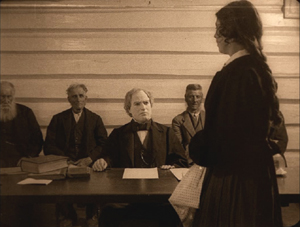
For information on some recent DVD and Blu-ray releases, see “Recovered, discovered, and restored DVDs, Blu-rays, and a book.”
We’ve put up an ebook on Christopher Nolan, based on updated versions of our blog entries, for $1.99. It includes some brief extracts from Nolan films, though you can opt for a version without the clips. For a description, see “Our new e-book on Christopher Nolan!
Don’t forget that we also have videos available for you to show or assign. For Chapter 3, on narrative, there’s “Twice Told Tales: Mildred Pierce,” including an imbedded Vimeo comparison of scenes repeating a crucial action. Chapter 6′s discussion of editing is supplemented by our most popular video, “Constructive Editing: Robert Bresson’s Pickpocket (1959).”
For the history chapter (Chapter 12), there are two video lectures: an entry on “How Motion Pictures Became the Movies 1908-1920″ and one on “CinemaScope: The Modern Miracle You See Without Glasses” (which could also be used in connection with the Cinematography chapter).
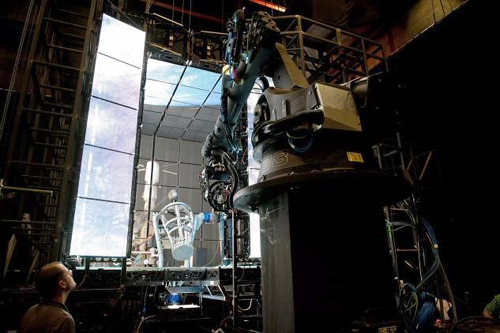
Gravity, production photograph
SOURCE: Observations on film art - Read entire story here.
Read MoreDown under on top: Inbetweeners 2 is No 1 at the UK box office
The hapless quartet's adventures in Australia steam into the top spot, shoving Guardians of the Galaxy into second
More UK box office analysis Continue reading...
SOURCE: Film | The Guardian - Read entire story here.
Favorite Films Of 2013
A glance at the lineups of the major film festivals reveals how strong a year 2013 was for cinema, though the most important films, as is usually the case, wouldn’t see the light of day until about a year or two later. Personally, even more than it did in 2012, cinema took a back seat for various reasons and I could see only a fraction of what I wanted to this year. (Favorite discoveries this year include Douglas Sirk, Harun Farocki, Ernst Lubitsch and Samuel Fuller.) This post lists my favorite films that premiered in 2013. Other films I really liked were Asghar Farhadi’s The Past, Richard Linklater’s Before Midnight, Shane Carruth’s Upstream Color, Andrew Bujalski’s Computer Chess, Steven Soderbergh’s Behind the Candelabra and Andrzej Wajda’s Walesa: Man of Hope. Hope that 2014 will be a much better year on all fronts.
1. The Wolf Of Wall Street (Martin Scorsese, USA)
 “Religion is the opium of the people” wrote Karl Marx. Leonardo DiCaprio’s Wall Street evangelist and stock market prophet, Jordan Belfort, might just agree, even though the kingdom of heaven he promises is very much of this world. Martin Scorsese’s loud, unhinged and debauched portrait of the rise, fall and resurrection of the loud, unhinged and debauched Belfort is the anti-Christ story of our age: a man who lets others suffer for his sake and for whom every object, experience and sensation in the world is worth commodifying. Scorsese’s presents late capitalism in all its rapaciousness and vulgarity, as a force which appropriates pretty much everything in its way, including criticism, to gain momentum, as a psychosexual space in which the id is given free rein and libido finds an outlet in the act of moneymaking and as a state of perpetual sensory stimulation where wealth accumulation for the sake of it becomes as addictive as sex and drugs. Rife with film references and genre games, The Wolf of Wall Street is as much a duet between Scorsese’s spiritual concerns and the topicality of Terence Winter’s adaptation as it is a soaring, endlessly fascinating example of commercial filmmaking that witnesses a veteran craftsman at the top of his game.
“Religion is the opium of the people” wrote Karl Marx. Leonardo DiCaprio’s Wall Street evangelist and stock market prophet, Jordan Belfort, might just agree, even though the kingdom of heaven he promises is very much of this world. Martin Scorsese’s loud, unhinged and debauched portrait of the rise, fall and resurrection of the loud, unhinged and debauched Belfort is the anti-Christ story of our age: a man who lets others suffer for his sake and for whom every object, experience and sensation in the world is worth commodifying. Scorsese’s presents late capitalism in all its rapaciousness and vulgarity, as a force which appropriates pretty much everything in its way, including criticism, to gain momentum, as a psychosexual space in which the id is given free rein and libido finds an outlet in the act of moneymaking and as a state of perpetual sensory stimulation where wealth accumulation for the sake of it becomes as addictive as sex and drugs. Rife with film references and genre games, The Wolf of Wall Street is as much a duet between Scorsese’s spiritual concerns and the topicality of Terence Winter’s adaptation as it is a soaring, endlessly fascinating example of commercial filmmaking that witnesses a veteran craftsman at the top of his game.
2. Stranger By The Lake (Alain Guiraudie, France)
 Irrationality is also at the heart of Alain Guiraudie’s simmering Stranger by the Lake, in which the object of fear is also the object of desire and where death and sex– la mort et la petite mort – are inseparably intertwined. Like Tsai Ming Liang’s quasi-phantom protagonists and their deserted habitats, the ghost-like characters in Guiraudie’s film haunt the lake by the day and vanish by night. And like Tsai’s cinema, Stranger employs a repetition of similar shots, spaces, movements and perspectives that both imparts it a structural simplicity and makes the gradual deviations from them even more pronounced. Marked by three distinct spaces – the woods, the beach and the parking lot – that trace the Freudian topology of the human psyche, the film presents a homo-normative world in which heterosexual presence is literally pushed to the margins, resulting in a level playing field divested of the problems of male gaze. More importantly, Stranger is perhaps the most visually accomplished film of the year and its handling of the interaction between Caucasian bodies and sunlight, foliage, twilight sky and water surface recalls the finest Impressionist works, especially those of Pierre-Auguste and Jean Renoir.
Irrationality is also at the heart of Alain Guiraudie’s simmering Stranger by the Lake, in which the object of fear is also the object of desire and where death and sex– la mort et la petite mort – are inseparably intertwined. Like Tsai Ming Liang’s quasi-phantom protagonists and their deserted habitats, the ghost-like characters in Guiraudie’s film haunt the lake by the day and vanish by night. And like Tsai’s cinema, Stranger employs a repetition of similar shots, spaces, movements and perspectives that both imparts it a structural simplicity and makes the gradual deviations from them even more pronounced. Marked by three distinct spaces – the woods, the beach and the parking lot – that trace the Freudian topology of the human psyche, the film presents a homo-normative world in which heterosexual presence is literally pushed to the margins, resulting in a level playing field divested of the problems of male gaze. More importantly, Stranger is perhaps the most visually accomplished film of the year and its handling of the interaction between Caucasian bodies and sunlight, foliage, twilight sky and water surface recalls the finest Impressionist works, especially those of Pierre-Auguste and Jean Renoir.
3. Stoker (Park Chan-wook, USA)
 An extremely inspired piece of filmmaking, Park Chan-wook’s brilliant Stoker contains some of the most exciting cinematography, editing, sound and production design seen this year. Like Polanski’s movies, Park’s film is about the gradual induction and eventual decimation of Good by Evil. As in Stranger by the Lake, what is most seductive is also the most frightful. Fear and desire are enlaced together and embodied by the figure of Uncle Charlie, who is both an instrument of death and object of sexual desire. Stoker is evidently the result of synergy between a strongly authorial filmmaker who thinks primarily in terms of images and a rich, meaty script that draws as much from horror cinema and literature as it does from Hitchcock’s body of work. Park’s erotic, alluring economy of expression distinguishes itself from the self-congratulatory shorthand of ad filmmaking in the way it establishes subtler association between images and sounds in the film. Strikingly directed with strongly vertical compositional elements and an eerily accentuated sound palette, Stoker is a glorious return to form for Park, who is among the most remarkable visual stylists working today.
An extremely inspired piece of filmmaking, Park Chan-wook’s brilliant Stoker contains some of the most exciting cinematography, editing, sound and production design seen this year. Like Polanski’s movies, Park’s film is about the gradual induction and eventual decimation of Good by Evil. As in Stranger by the Lake, what is most seductive is also the most frightful. Fear and desire are enlaced together and embodied by the figure of Uncle Charlie, who is both an instrument of death and object of sexual desire. Stoker is evidently the result of synergy between a strongly authorial filmmaker who thinks primarily in terms of images and a rich, meaty script that draws as much from horror cinema and literature as it does from Hitchcock’s body of work. Park’s erotic, alluring economy of expression distinguishes itself from the self-congratulatory shorthand of ad filmmaking in the way it establishes subtler association between images and sounds in the film. Strikingly directed with strongly vertical compositional elements and an eerily accentuated sound palette, Stoker is a glorious return to form for Park, who is among the most remarkable visual stylists working today.
4. Shield Of Straw (Takashi Miike, Japan)
 Takashi Miike’s juggernaut of a film, the proto-dystopian Shield of Straw, works off a premise familiar to Western movie audience: a group of cops have to transfer a pedophilic killer from the city of Fukuoka to the police headquarters in Tokyo. But there’s a problem. A multi-billionaire has announced a bounty on the guy so massive that it overshadows any fear of imprisonment. What’s more, the killer is such a despicable figure that any residual moral compunction about knocking him off is eliminated. The cops, as a result, have to protect him from not only the entire Japanese population but also themselves. A distant cousin to Scorsese’s film, Shield of Straw imagines a society where both moral and legal obstacles – the superegoist constructs of sin and crime – to Darwinian social-climbing are eliminated or, worse, justified. More impressive than the demonstration of how such an economic system becomes a perfect incubating ground for greed is its central existential dilemma, in which the obligation is on the individual not only to do the right thing, but to understand what the right thing is.
Takashi Miike’s juggernaut of a film, the proto-dystopian Shield of Straw, works off a premise familiar to Western movie audience: a group of cops have to transfer a pedophilic killer from the city of Fukuoka to the police headquarters in Tokyo. But there’s a problem. A multi-billionaire has announced a bounty on the guy so massive that it overshadows any fear of imprisonment. What’s more, the killer is such a despicable figure that any residual moral compunction about knocking him off is eliminated. The cops, as a result, have to protect him from not only the entire Japanese population but also themselves. A distant cousin to Scorsese’s film, Shield of Straw imagines a society where both moral and legal obstacles – the superegoist constructs of sin and crime – to Darwinian social-climbing are eliminated or, worse, justified. More impressive than the demonstration of how such an economic system becomes a perfect incubating ground for greed is its central existential dilemma, in which the obligation is on the individual not only to do the right thing, but to understand what the right thing is.
5. The Missing Picture (Rithy Panh, Cambodia)
 How do you represent history on film that was never documented visually? This is the question that to which Rithy Panh’s highly original, challenging and affecting work responds. Seeking primarily to be a document of life in the Khmer Rouge concentration camps, the film uses neither fictional recreation, which might end up graphic and exploitative, nor animation, which lacks the material presence that photographs offer, but hundreds of meticulously hand-made clay dolls that stand in for people who are to be represented, the concept being that clay would symbolically contain the remains of the camp victims. The resulting film places the audience at a distance from the horrors being described while always retaining a space for empathy. A densely detailed voiceover , on the other hand, recounts Panh’s personal experience at the camps, his lament about images that should or should not have been made, the way cinema had become a tool for totalitarian oppression and reflections on the wacky “Marx meets Rousseau” ideology of the Khmer Rouge that justified the camps. The outcome is a thoroughly thought-provoking essay film that has both the simplicity of a historical document and the ambitiousness of a deconstruction project.
How do you represent history on film that was never documented visually? This is the question that to which Rithy Panh’s highly original, challenging and affecting work responds. Seeking primarily to be a document of life in the Khmer Rouge concentration camps, the film uses neither fictional recreation, which might end up graphic and exploitative, nor animation, which lacks the material presence that photographs offer, but hundreds of meticulously hand-made clay dolls that stand in for people who are to be represented, the concept being that clay would symbolically contain the remains of the camp victims. The resulting film places the audience at a distance from the horrors being described while always retaining a space for empathy. A densely detailed voiceover , on the other hand, recounts Panh’s personal experience at the camps, his lament about images that should or should not have been made, the way cinema had become a tool for totalitarian oppression and reflections on the wacky “Marx meets Rousseau” ideology of the Khmer Rouge that justified the camps. The outcome is a thoroughly thought-provoking essay film that has both the simplicity of a historical document and the ambitiousness of a deconstruction project.
6. In Bloom (Nana Ekvtimishvili/Simon Groß, Georgia)
 One of the regrettable things about Nana Ekvtimishvili’s and Simon Gross’ absolutely heartbreaking debut In Bloom is that it is being promoted and received merely as a coming-of-age film set against Soviet collapse. Though the film is certainly that, it is grossly unfair to pigeonhole a wrenching portrayal of female camaraderie on par with anything that Pedro Almodóvar has made into a convenient marketing category. Two 14-year old ‘women’ Eka and Natia, superbly played by debutants Lika Babulani and Mariam Bokeria, in the process of transitioning to adulthood, negotiate the social and cultural problems that plague a country in transition and quietly break patriarchal norms. Dysfunctional families, street violence and the war with Abkhazia are all definitely forces that shape the young women’s lives, but they reside on the periphery of the narrative, which, like the finest Italian Neorealist films, does not underestimate the power of individual agency while acknowledging social constructivism. There is as much truth in Natia acceding to be married to a guy she does not like as there is in Eka tossing the Chekhovian pistol into a lake.
One of the regrettable things about Nana Ekvtimishvili’s and Simon Gross’ absolutely heartbreaking debut In Bloom is that it is being promoted and received merely as a coming-of-age film set against Soviet collapse. Though the film is certainly that, it is grossly unfair to pigeonhole a wrenching portrayal of female camaraderie on par with anything that Pedro Almodóvar has made into a convenient marketing category. Two 14-year old ‘women’ Eka and Natia, superbly played by debutants Lika Babulani and Mariam Bokeria, in the process of transitioning to adulthood, negotiate the social and cultural problems that plague a country in transition and quietly break patriarchal norms. Dysfunctional families, street violence and the war with Abkhazia are all definitely forces that shape the young women’s lives, but they reside on the periphery of the narrative, which, like the finest Italian Neorealist films, does not underestimate the power of individual agency while acknowledging social constructivism. There is as much truth in Natia acceding to be married to a guy she does not like as there is in Eka tossing the Chekhovian pistol into a lake.
7. Mood Indigo (Michel Gondry, France)
 Trust a wild music video director like Michel Gondry to come up with the zaniest, trippiest, most imaginative film of the year. Adapted from Boris Vian’s (apparently unfilmable) book L’écume des jours, Mood Indigo is escapist cinema in the truest sense of the term and presents a universe free from the laws of physics and logic. So you have the Pianocktail which concocts a drink based on the notes you play, a rubbery dance form where legs wobble and sway with the woozy jazz soundtrack, split-screen weather conditions, a doorbell that needs to be squashed every time it is set off, a star philosopher named Jean-Sol Partre discoursing from inside a gigantic pipe and a floor full of stenographers writing in chorus the film they are in. Mood Indigo’s gently satirical tale of downward mobility embodies the spirit of the best musicals, producing a strange, unwieldy yet alluring film that combines levity of form with the somberness of its story. Rivaling Terry Gilliam at his surreal best, Gondry’s ceaselessly inventive film is something of a descendant to Georges Méliès’ and Émile Cohl’s cinema of dreams.
Trust a wild music video director like Michel Gondry to come up with the zaniest, trippiest, most imaginative film of the year. Adapted from Boris Vian’s (apparently unfilmable) book L’écume des jours, Mood Indigo is escapist cinema in the truest sense of the term and presents a universe free from the laws of physics and logic. So you have the Pianocktail which concocts a drink based on the notes you play, a rubbery dance form where legs wobble and sway with the woozy jazz soundtrack, split-screen weather conditions, a doorbell that needs to be squashed every time it is set off, a star philosopher named Jean-Sol Partre discoursing from inside a gigantic pipe and a floor full of stenographers writing in chorus the film they are in. Mood Indigo’s gently satirical tale of downward mobility embodies the spirit of the best musicals, producing a strange, unwieldy yet alluring film that combines levity of form with the somberness of its story. Rivaling Terry Gilliam at his surreal best, Gondry’s ceaselessly inventive film is something of a descendant to Georges Méliès’ and Émile Cohl’s cinema of dreams.
8. A Spell To Ward Off The Darkness (Ben Rivers/Ben Russell, Estonia)
 Ben Rivers’ and Ben Russell’s hypnotic tripartite work presents a single nameless character, played by musician Robert A A Lowe, living in three different social setups: as a part of a commune in Estonia, as a loner in the Finnish woods and as a member of a Norwegian Black Metal group. Specifically, the film shows the character in three states of being, in which the identity of the individual is subordinated to larger ones – the New Ageist assimilation of individual into the community, the Tarkovskian oneness with nature and the Black Metallic transcendence into the realm of the occult. These, on a more general level, are also the three avenues through which men create meaning in their lives – purposeful communal living, Thoreau-esque simple life in harmony with nature and creation of art. Although Spell’s significance arises from the interaction between its three parts, the individual segments themselves contain enthralling passages, especially the trancelike last section, made almost entirely out of the close-ups of performers’ faces and the discordant soundscape, transports the viewer to an experiential plane far removed from his mundane corporeality. It reinforces what André Bazin said of cinema: the Real can be arrived at only through artifice.
Ben Rivers’ and Ben Russell’s hypnotic tripartite work presents a single nameless character, played by musician Robert A A Lowe, living in three different social setups: as a part of a commune in Estonia, as a loner in the Finnish woods and as a member of a Norwegian Black Metal group. Specifically, the film shows the character in three states of being, in which the identity of the individual is subordinated to larger ones – the New Ageist assimilation of individual into the community, the Tarkovskian oneness with nature and the Black Metallic transcendence into the realm of the occult. These, on a more general level, are also the three avenues through which men create meaning in their lives – purposeful communal living, Thoreau-esque simple life in harmony with nature and creation of art. Although Spell’s significance arises from the interaction between its three parts, the individual segments themselves contain enthralling passages, especially the trancelike last section, made almost entirely out of the close-ups of performers’ faces and the discordant soundscape, transports the viewer to an experiential plane far removed from his mundane corporeality. It reinforces what André Bazin said of cinema: the Real can be arrived at only through artifice.
9. Like Father, Like Son (Hirokazu Kore-eda, Japan)
 A decidedly worn-out premise is at the origin of Hirokazu Kore-eda’s Like Father, Like Son: two babies are swapped at the hospital at the time of birth and end up in different social strata. What could have been an exercise in broad comedy or, even worse, class stereotyping – though the film is a comedy and does double as a fine comedy of class-bound manners – is instead transformed into a piercing examination of parenthood, in which bringing up a child becomes a process of coming to terms with one’s own flaws and insecurities. Through turn of events the film undermines the perspective that men look at their offspring as a continuation of bloodline and women view them as the recipients of their care and affection, While, on the surface, the film seems to be merely a cautionary tale about the perils of spending too little time with your kid, on careful unraveling, it reveals itself as a much more delicate look at the tradeoffs one has to make in bringing up a child, at the question of where to interfere and where to let go.
A decidedly worn-out premise is at the origin of Hirokazu Kore-eda’s Like Father, Like Son: two babies are swapped at the hospital at the time of birth and end up in different social strata. What could have been an exercise in broad comedy or, even worse, class stereotyping – though the film is a comedy and does double as a fine comedy of class-bound manners – is instead transformed into a piercing examination of parenthood, in which bringing up a child becomes a process of coming to terms with one’s own flaws and insecurities. Through turn of events the film undermines the perspective that men look at their offspring as a continuation of bloodline and women view them as the recipients of their care and affection, While, on the surface, the film seems to be merely a cautionary tale about the perils of spending too little time with your kid, on careful unraveling, it reveals itself as a much more delicate look at the tradeoffs one has to make in bringing up a child, at the question of where to interfere and where to let go.
10. Drinking Buddies (Joe Swanberg, USA)
 With Drinking Buddies, the insanely prolific Joe Swanberg, who wrote and directed a modest three films in 2013 and acted in five, has made a work that might well situate him in the line of filmmakers like Eric Rohmer, Richard Linklater and Hong Sang-soo in both its structural simplicity – marked by numerous small symmetries – and its fine observations on human relationships. The terrific ensemble is as much an author as Swanberg is and the actors evidently draw from personal experience. A naturalistic depiction of the lives of two friends at a brewery, the film treads the ever fuzzy boundary between friendship and romance. Like in the equally excellent Mexican comedy Club Sandwich (2013), Swanberg and his actors host a playful game of smudging the boundaries of sexual propriety by employing ambiguous actor positions, dialogue and physical interaction that fudges the accepted movie conventions about on-screen friendship and romance. If not anything else, Drinking Buddies is an embodiment of the shortcomings and apprehensions of the ‘millennial’ generation, for which the line between friendship and romance has become porous and tricky to negotiate.
With Drinking Buddies, the insanely prolific Joe Swanberg, who wrote and directed a modest three films in 2013 and acted in five, has made a work that might well situate him in the line of filmmakers like Eric Rohmer, Richard Linklater and Hong Sang-soo in both its structural simplicity – marked by numerous small symmetries – and its fine observations on human relationships. The terrific ensemble is as much an author as Swanberg is and the actors evidently draw from personal experience. A naturalistic depiction of the lives of two friends at a brewery, the film treads the ever fuzzy boundary between friendship and romance. Like in the equally excellent Mexican comedy Club Sandwich (2013), Swanberg and his actors host a playful game of smudging the boundaries of sexual propriety by employing ambiguous actor positions, dialogue and physical interaction that fudges the accepted movie conventions about on-screen friendship and romance. If not anything else, Drinking Buddies is an embodiment of the shortcomings and apprehensions of the ‘millennial’ generation, for which the line between friendship and romance has become porous and tricky to negotiate.
Special mention: Young And Beautiful (François Ozon, France)
![]()
SOURCE: The Seventh Art - Read entire story here.
